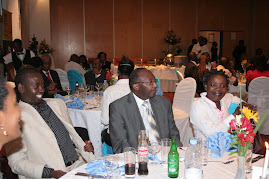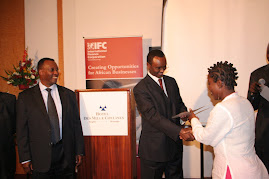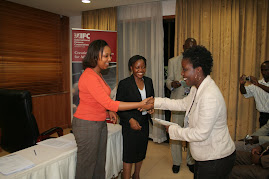CUSTOMER CARE: BY SANDRA IDOSSOU
Good communication skills can help in both our personal and professional lives. Even though verbal and written communication skills are very important in our businesses, experts say that a great amount of our daily communication is based on our non verbal communication.
Most of us know that non verbal communication is usually the process of communication through sending and receiving wordless messages.
It is important because it is seen through our gestures, our body language, our personal space, our hairstyles, our position vis-à-vis others, our postures and even in our facial expressions or our eye Contact.

Sometime back, I walked into a cosmetic shop around the Union Trade Center in town and the way the service lady looked at me clearly sent out the message that I had come to disturb her and her colleagues.
She took more than 5 minutes to walk towards me by dragging her feet. The way she talked to me and even the manner in which she handled my order made me feel that I should have chosen another shop instead of hers.
There is this story about the presidential debate of Richard Nixon and John F. Kennedy in 1960 where people listening via radio awarded the victory to Nixon while those watching the debate on television awarded the victory to Kennedy.
This was explained by the fact that though President Nixon had very persuasive words during the debate, he was more tensed, was sweating and was quite uncomfortable.
On the other hand, President Kennedy was looking very athletic and charming and was able to convey a positive and convincing body language during that debate.
Since that incident, researchers have demonstrated that a message is perceived in 3 different ways:
55 percent visually by body language
Since that incident, researchers have demonstrated that a message is perceived in 3 different ways:

55 percent visually by body language
There are very little details about our body language that have an impact on how other people relate to us. Our body language communication is also seen in the way we shake hands with people down to the intonation of our voice.
Have you already seen yourself walking? How do you carry yourself? Do you walk as if going for a catwalk or as if forced to be in that office or shop?
Eye contact is an important part in non verbal communication. It is often said that you have to listen also with your eyes. It means looking at people in the eye when talking to them.
When you fail to do that, it can seem as if you are evading or trying to hide something. This, of course doesn’t mean that you should stare at people.
When you fail to do that, it can seem as if you are evading or trying to hide something. This, of course doesn’t mean that you should stare at people.
38 percent by the voice
Your tone of voice can convey a wealth of information, ranging from enthusiasm to disinterest to anger. Studies done show us that the percentage of understanding that is gained from the spoken word is considerably lesser than the meaning that people gain from listening to a person’s tone of voice.
Your voice becomes then an essential element in communication that should be bold, firm and enthusiastic. On the telephone, the voice should even be clearer.
7 percent by the Words
We need to note that the same words will be interpreted differently by each different person. This implies that no two people will attribute the exact same meaning to the same words. Let’s then be concise and clear with simple words when speaking to customers.
Service people should remember that their body language sends lots of message about themselves. Note that everyone speaks at least two languages….your Body and your Verbal language.
Your dynamism is seen in the way you walk; talk, smile and move. Please try to always send a positive image on yourself through your non verbal communication.
The author is a customer service expert currently working in Rwanda. She can be reached at sandra.idossou@sheiconsulting.com






























Aucun commentaire:
Enregistrer un commentaire